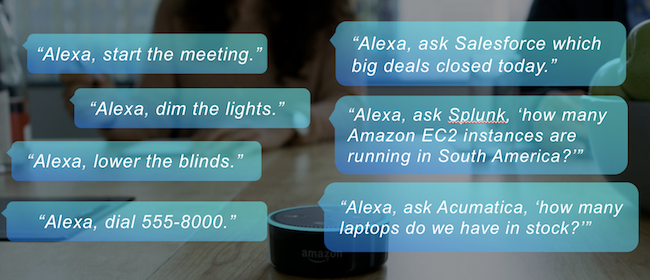Nearly 30% of the businesses all around the globe, probably by 2018, would “conversate” with their smart technologies, through voice!
Phenomenal growth and standardization in the telephony voice market and speech recognition technologies has driven the need for enhancing the existing enterprise applications running on the visual web. With Apple adding Siri to iOS some six years ago, correspondingly earmarking the inception of voice as the most natural means of communication possible with those exotic inventions, it is very likely to hope the consumer landscape getting transformed on devices from smartphones, to smartwatches, to smart speakers! Google Assistant and Alexa are paving their way as well in workplaces to an extent, and so are Cortana and Google Home, however intended for a home assistance. Though they seem to be very feasible when it comes to home acclimatization, these voice-activated virtual assistants are yet to truly break through in the enterprise.
That isn't really to say that most enterprises don't already accomplish business tasks using these virtual assistants. Many of us rely on them for quick tasks such as getting directions, scheduling appointments and responding to messages. But, it has been quite the same as it had been back in 2011!
VOICE DID TURN OUT TO BE A GAME CHANGER!
Voice is indeed a blessing mankind has been endowed with. It is spontaneous, intuitive, and highlighting a great deal of context. It is much more agreeable that touch, or even a tap, would not be as prolific to render a message, as a simple “ask” would rather be; neither does a tap on our smartphone succeed in integrating digitalization into our very lives, by failing to be customer-centric in the first place! Obviously as it is so, using your voice doesn’t pre-require you to get acquainted with something as a user interface, neither you need something like an app to govern you with the guidelines of getting a task done.
And it was not until Apple pounced in with Siri, that voice enabled enterprises have become so alluring to the entrepreneurs. This has indeed become palpable because of the following juxtaposing advances in the computing world:
- Access to large scale voice training data
- Plausible exalts in softwares’ efficiencies using the processing engines such as Caffe and MXNet
- Surge of massively parallel compute engines with low latency memory access, such as the Amazon EC2 P3 Instances, much notorious in the computing world
THE CHALLENGES TO LOOK AT!
Well, with the advent of everything mankind has been a witness to, hurdles have been creeping in in the name of a few possible augmentations.
One impediment has been the ability to manage voice-controlled interactions and devices at scale. And Alexa For Business has currently been an apprentice to Amazon, who is grasping a set of skills intending to win over this very sovereignty held by the physics of acoustics. Alexa For Business has been successful in voice-enabling workspaces, corporate applications, people and of course, customers! Science here does call for a few prerequisites though, as listed down below:
- A management layer of course, which is where an Alexa For Business would play in
- A set of APIs to integrate with your IT apps and infrastructure
- Judiciously installed voice-enabled devices, almost everywhere, a bit like the “Divide & Rule” policy embraced by the British colonies
“People are being misled by things like Siri, Cortana, Google Assistant, and Alexa, which are still very much first-generation products -- clever but still first-generation clever! Too many of these technologies still can't go beyond single-threaded conversations and into multi-threaded conversations with even basic context.”
- Ian Cohen (Digital Advisor)
Alexa For Business is now able to control the environment, help you find directions, book a room, report an issue, or find transportation, and most of all, avoid silly procrastinations in meetings! The administrator just needs to configure the conference rooms (she even shows whether a room would be/is available for something like a parallel meeting) and integrate the calendars to the devices. On the day of business, you need to give her an errand, “Alexa, start the meeting!”, and there you go. She knows what the meeting is from the calendars you have already integrated; she mines the dial-ins, reports to the conference host, and begins with the meeting, within seconds.
CONCLUSION!
Without a doubt, voice is already in the enterprise, powering productivity and collaboration efforts. But even after more than half a decade in the market, voice remains in its infancy. The revolution it offers is coming, but the needed confluence of hardware, platform, apps and workflows isn't in place yet to capture its potential.
Great minds have indeed been concentrating on capturing that potential, and the future of voice does seem to lie in responsible hands!
Great minds have indeed been concentrating on capturing that potential, and the future of voice does seem to lie in responsible hands!




